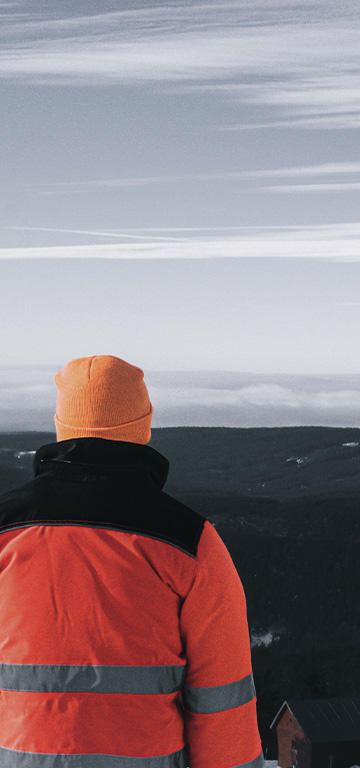
Layers against the cold
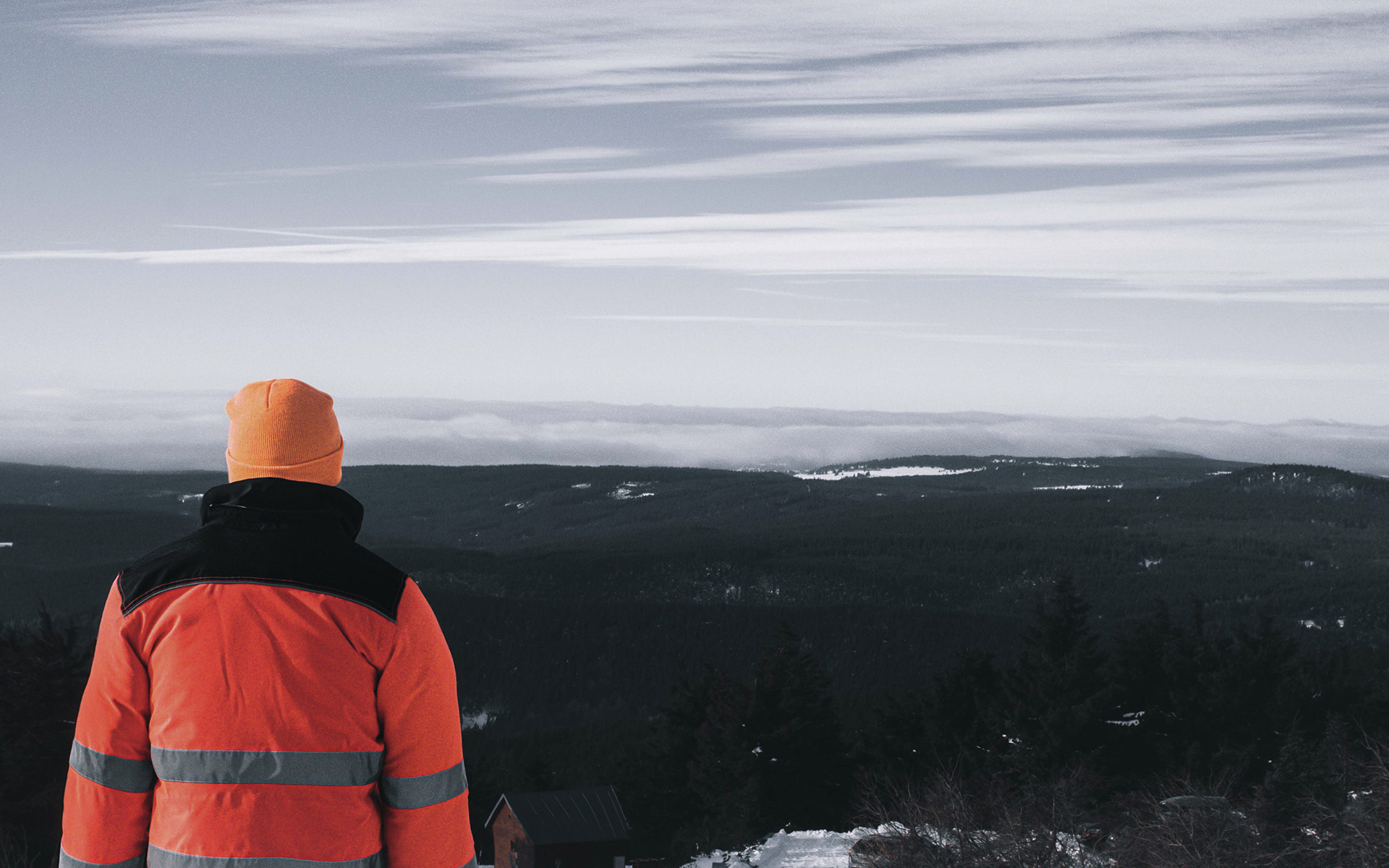
Layers against the cold
Low temperatures are not only unpleasant for people, but they also have a negative impact on the work performance. At least that is what researchers from the American Cornell University claim, saying that workers who are cold perform their duties more slowly and make more mistakes. Staying warm is therefore important not only for health reasons.
Everyone who works outdoors or in unheated spaces should prepare for the upcoming winter season. Staff in refrigerated areas such as freezers, cold stores or food warehouses have to endure low temperatures all year round.
Read our tips on how to dress for a cold environment, how individual layers of clothing work and what to take into account if you will also face wind, rain, or snow.
Why is cold protection important?
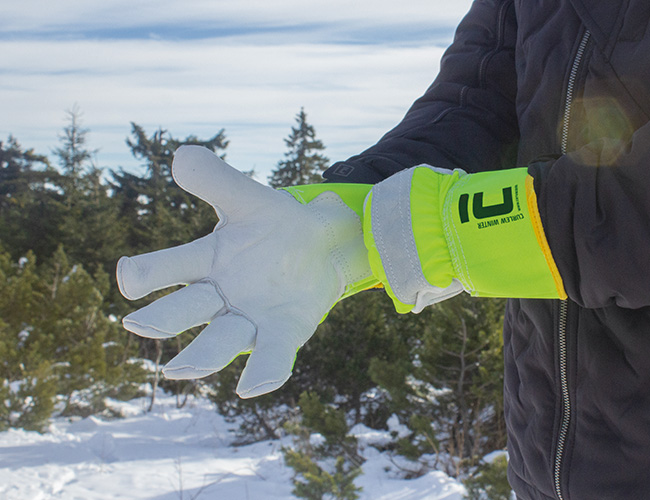
Why is cold protection important?
An extended stay in low temperatures is a burden on the cardiovascular system as blood vessels constrict, blood thickens, and the heart must work harder. People with heart disease thus experience chest pain and quickly become short of breath on exertion. Chilly air makes breathing difficult, which is particularly dangerous for asthmatics.
And when the mercury on the thermometer drops below zero, another danger is frostbite, which causes loss of sensation in the affected tissue and a change in its color. It mostly affects the nose, ears, hands and feet.
And how do low temperatures affect performance? Poor blood circulation in the body affects the nervous system, and people are less able to concentrate and sleepier in the cold. Cold limbs get numb and their movements are less precise.
Shielding away from thermal discomfort
The bottom layer
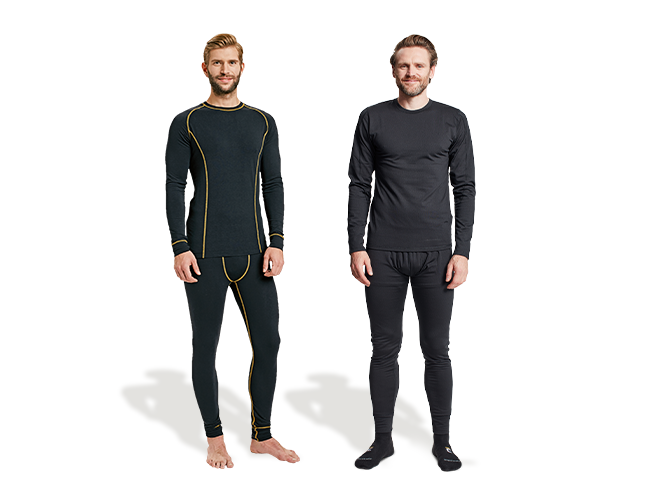
The bottom layer
Let's start with the base layer (also called thermal or compression), which is closest to the body, acting as “second skin”. Base layers and thermal clothing are typically split into two types (tops and bottoms) that you can wear under another item, as part of a layering system, or even on their own. Their function is wicking sweat and moisture away from the skin well and maintaining warmth at the same time. These properties can be found in synthetic fabrics like polypropylene or polyester, and natural materials such as merino wool, tencel (made from cellulose fibers of eucalyptus) or soy or bamboo fiber. The material of the bottom layer should also contain some elastane, which gives it elasticity. It is important that your clothes fit well and wrap your entire body, but at the same time they should not strangle you and limit your movement.
The middle layer
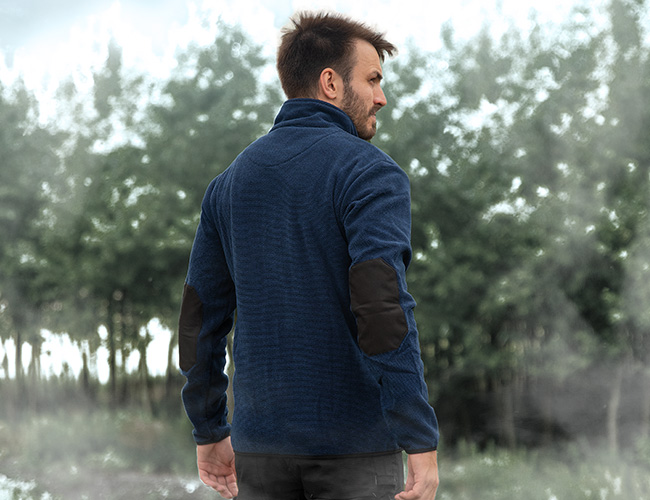
The middle layer
The middle layer will protect you from the cold by conserving the heat generated by your body. At the same time, it should protect against the penetration of cold from the outside. Another important property is breathability. A frequently used material for mid layer clothing (sweatshirts, sweaters, vests) is fleece knit. A thin layer of air is locked between the individual fibers, which acts as an insulator. Merino wool also has excellent insulating properties, and unlike synthetic fleece, it is antimicrobial, so it does not stink even after a grueling day.
When choosing a middle layer, pay attention to the cut. You will appreciate an elongated back and raised collar with that better protects your neck. The thumb loops on the sleeves are practical: the sleeve will also protect your wrist, and what's more, it won't roll up. And on days when there are big temperature swings, the full zip mid layer comes in handy.
The outer layer
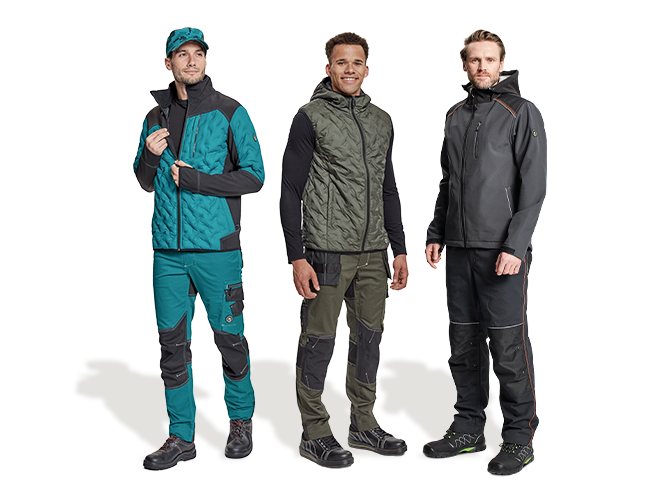
The outer layer
The outer layer (a jacket and insulated pants) protects you from rain, snow and wind, while preventing the penetration of cold air from the outside.
A popular material for jackets and trousers is softshell, which keeps cold and moisture away from the body, but at the same time wicks sweat well to the outside, is flexible and adjusts well to the body. Softshell clothing also includes internal insulation with a thin layer of fleece or hollow fiber filling. The membrane surface treatment increases the material resistance to moisture (water column) and cold. A cheaper alternative to the membrane is high-quality polyurethane coating on the fabric. Clothing made of waterproof materials should have taped seams that prevent water from seeping through.
KNOXFIELD PROFI collection
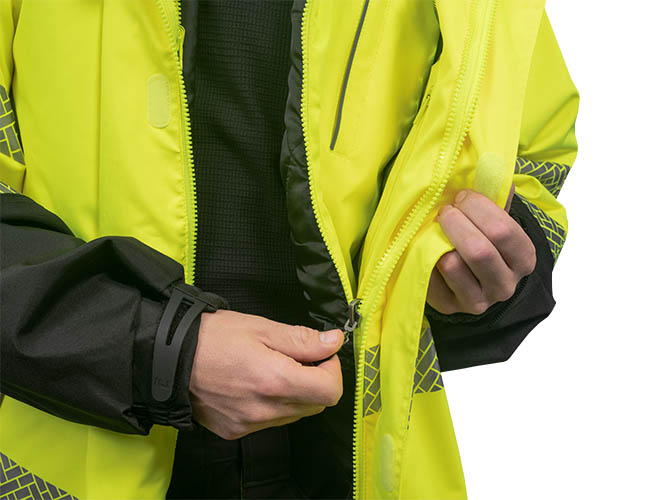
KNOXFIELD PROFI collection
Jackets and sweatshirts from the CERVA KNOXFIELD PROFI collection meet all the requirements for effective protection against cold, moisture and wind while also ensuring the wearer’s visibility in dark and fog thank to their warning colors design. Wearing the KNOXFIELD PROFI jacket with a water column of 15,000 mm and a detachable hood, you will never freeze as you can zip an inner jacket in it and thereby increase its thermal insulation properties.
And which inner jacket will you choose?
We have three options for you: a double-sided insulated jacket with detachable sleeves and a water column of 8000 mm, which you can wear separately either as a jacket or as a practical vest; a softshell jacket with a warm fleece lining, or a light sweatshirt. All models from the collection have a removable hood, so they will come in handy outdoors as well as in unheated indoor spaces. The jackets have practical pockets and a drawstring on the lower circumference that improves the wind protection.
A recipe against frostbite
Proper layering is essential, but don't underestimate hand, foot and head protection either. It is the hands and feet that are most susceptible to frostbite. This can already occur at temperatures around 1-3 °C if there is wind and higher air humidity. In addition, cold limbs become numb making manual work almost impossible. Protecting your head from the cold can prevent ear frostbite and unpleasant inflammation of the sinuses and upper respiratory tract.
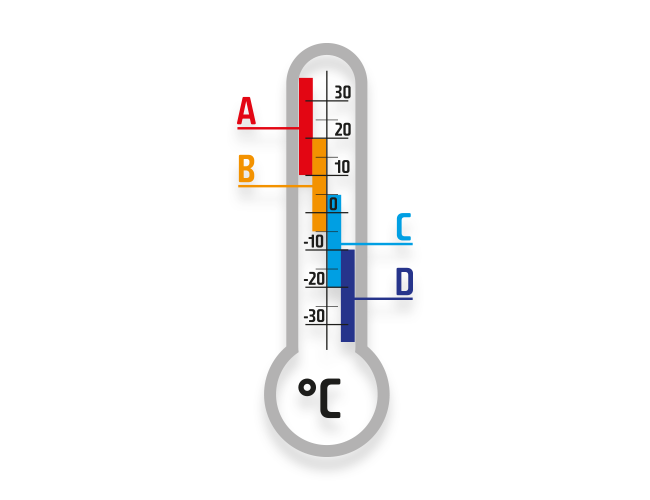
So, what should be a necessary part of your winter equipment?
Insulated footwear is essential. Choose shoes and boots that will keep your feet warm while meeting other requirements of your (slip resistance, resistance to oils, puncture protection, etc.). The same goes for gloves.
For socks, the material is the most important: you will stay warm and comfortable in merino wool, bamboo fiber or polypropylene. Cotton is completely unsuitable as it soaks up moisture and draw heat away. Manufacturer's recommendations and temperature categories can also help you choose wisely. A safe bet is categories C and D, which will keep your feet warm up to -20 and -35 °C, respectively. The hats and caps can be made from the same materials as socks. If you also need protection from rain and snow, the headwear should have a waterproof membrane.
What the standards say...
 | Work clothes that provide protection against extremely low temperatures (-5° C and below) follow the EN 342 standard. They keep the worker warm even in high humidity and protect well from the wind. |
 | If you need rain gear, look for one that complies with the EN 343 standard. This guarantees that the clothing is made of waterproof material and have taped seams. Clothing conforming to this standard also wicks away moisture to the outside, keeping you dry. |
 | For unheated or cooled spaces, clothing marked with the EN 14058 standard is suitable, which ensures thermal comfort down to -5° C. |